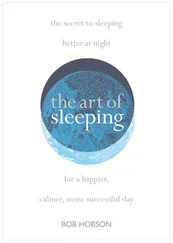 Make and take Through this you can be with your child to make (or bake) something together, perhaps for a special occasion or particular time of year. For this activity, it is okay for the child to be aware that the aim is to create a finished product.
Make and take Through this you can be with your child to make (or bake) something together, perhaps for a special occasion or particular time of year. For this activity, it is okay for the child to be aware that the aim is to create a finished product.
Stay and play This is when you make time to simply play with your child. Often this way to play is special time with stories and books, games or song-based play.
Sanity savers This is when you use quick-thinking tricks and play to keep children behaving as you would like, but with fun and games rather than stern discipline.
How to use this book
The Playful Parent is a guide to managing and enjoying your busy family life with play. It will help you identify, observe and initiate play, and enable you to integrate it into your everyday routine. It will help you feel more confident about encouraging a mix of activities from across the broad spectrum of play to fulfil your family’s particular needs in most situations, from a spare five minutes to the times when something playful can absolutely save the day. It’s a book to dip into again and again for details of practical and fun ideas to help you use play throughout your day, or to simply get some inspiration.
You’ll be fluent in the language of play in no time, and you’ll begin to really enjoy – not endure – those messy, marvellous and magical toddler and preschool years. It doesn’t matter if you feel you have forgotten how to play; babies, toddlers and children instinctively know how to do it. It doesn’t matter either if you think you haven’t a creative bone in your body – children are the most creative people on the planet. And it doesn’t matter if you feel you don’t have the time or the inclination to be the family entertainer – children are naturally great at entertaining themselves. All you have to do is give them opportunities to play along the way, every day – and these can be found in the many tried-and-tested ideas in this book.
Use the 7 Ways to Play to plan your day
Planning play is like planning meals; just as you aim to provide your child with a balanced diet of food, you might aim to offer a balanced diet of play too. So, in the same way that you wouldn’t want their diet to be all bread and cereal, say, their play shouldn’t be all make and take. Some people like to create weekly plans for their meals, others like to take it one day at a time; the same principle can be applied to planning your play. When you’re familiar with all the different ways to play you can begin to pick and mix the ideas to give your child variety; you can plan by selecting the right kind of play at the right time — to suit you, your situation and the needs of your child – and, of course, come up with your own ideas. If you wish, you could then make these into a daily or weekly play planner – just like a meal planner.
The key thing to consider when planning your play is how much time you have. If you really need your little one to be getting on with something by themselves or perhaps to be helping you get on with something, happily and cooperatively, then choose an idea from Chores: not Bores, 10-Second Set-ups or Sanity Savers. If you want to set up an activity that engages them while you merely supervise, choose an Invitation to Play. If you can be around to help them a bit, choose an Invitation to Create; if you have enough time to actually join in, then try a Stay and Play or a Make and Take activity.
Also, when choosing ways to play, think about the mood your little one is in. Are they full of beans? Can you stay and play? If they’re bouncing around when you need to make a phone call, or you’d just like them to play by themselves for a while, choose an active 10-second set-up, like the balloon solution, or an active invitation to play as.
If your child is feeling poorly you could try a gentle stay and play – perhaps reading to them. Then, depending on how they’re feeling, you might set them up with a gentle invitation to create – maybe with some play dough, or with an audio book – or a simple invitation to play – perhaps using small figurines and a little play scene on their duvet.
Whatever your situation – whether you want to mark high days and holidays with some kind of art or craft, have a cosy day at home because you’re feeling unwell, fit play into a hectic morning of shopping and travelling, use it to cool down on a hot day or simply to get them outside for a while – there is a way to play in this book that will suit.
Family Favourites
You might like to make your own collection of playful-time favourites by trying out a few of the ways to play and making a note of any that worked particularly well in the Favourite Play chart at the back of this book. As your repertoire expands, and you add ideas of your own, you can check with this list and revisit those favourite activities when you’re stuck for an idea. By continuing to add more winning ways to play to your list of tried-and-tested, go-to ideas, you will create a bespoke play-planner that’s perfect for your family (see here).
A quick guide to baby and preschool play
How can we recognise play?
Young children have a natural drive to be playful and to find every opportunity to play; they have a talent to be totally and busily absorbed in whatever they’re playing. It can be hard for us grown ups to recognise play sometimes – let alone define it – as we’re often so busy ourselves, or feeding, changing and cleaning up around our little ones that we don’t really see what’s going on. But just take a moment, when you next get a chance, to observe your child at play – I still find it pretty captivating to watch my own children. Look at that tiny infant kicking her legs or watching the light bounce off the reflection in a window – she’s playing. Look at that baby sitting up and crinkling some noisy fabric – he’s playing. Look at that toddler digging a hole with a stick – she’s playing. Look at those preschoolers with pillowcases round their shoulders, picking up leaves and taking them to a tree stump – they’re playing. Look at that little girl tapping her water bottle along the park railings – she’s playing. As I might watch a talented artist sculpting or a chef cooking, I’m often in bewildered awe at the sight of babies, toddlers and preschoolers playing. For me, their ingenuity, creativity, imagination and their ability to be fully immersed in their game is a wonder to behold.
What do they play?
What babies, toddlers and preschoolers actually play can be grouped into categories, which can help us begin to recognise play when we observe it, giving us a little window into their special, wonderful world. Children often exhibit more than one category of play at a time, and there are acknowledged to be around sixteen types, so it can get a little confusing, but to help you identify what your little one might actually be doing when they’re, say, ripping up your newspaper or making those two pebbles talk to one another, here’s a summary of some of the different categories of play in which your little one might be immersed.
Imaginative/fantasy play
In these games a large cardboard box will become a car, a tea towel a superhero cape, or the sofa a volcano with the carpet as the lava, or you might be made cup after cup of ‘tea’, or a toy hammer and screwdriver will be tucked into the top of shorts, a hard hat popped onto a head and your kitchen will be measured-up and ‘mended’. This category of play begins as imitation of what the grown ups do in a kind of role-play, but later it can take on a more filmic, adventurous quality. It’s immersive and full of improvisation, and children are experts at this kind of play from as early as two years old.
Читать дальше

 Make and take Through this you can be with your child to make (or bake) something together, perhaps for a special occasion or particular time of year. For this activity, it is okay for the child to be aware that the aim is to create a finished product.
Make and take Through this you can be with your child to make (or bake) something together, perhaps for a special occasion or particular time of year. For this activity, it is okay for the child to be aware that the aim is to create a finished product.










